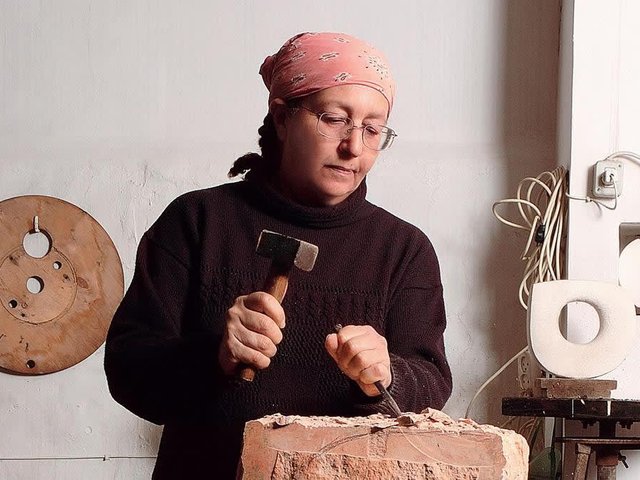London
An Arabian camel owner has made a discovery that could transform our understanding of the development of the Late Stone Age. Until now, archaeologists assumed that the horse was not domesticated until around 3500BC in central Asia, but a sculpture of what appears to be a harnessed horse, which could date from 7000BC, has been found in Saudi Arabia.
The find has been lent to the British Museum and exhibited for the first time in “The Horse: from Saudi Arabia to Ascot” (until 30 September). The implications of the find are enormous: once man began to use horses it became easier to travel over land for trade as well as for warfare and expanding empires.
Mutlaq ibn Gublan was digging a pond for his camels on grazing land near Al-Maqar, in south-western Saudi Arabia, when he found an ancient sculpted stone head of an animal. Almost a metre long, the sculpture appeared to be the lower part of the head and the shoulder of a horse, with what seemed to be a bridle in relief and an incised noseband. Ibn Gublan dug further, finding a menagerie of other carved animals. He informed the Saudi authorities and donated his finds to the National Museum in Riyadh.
Archaeologists quickly came to Al-Maqar, finding arrowheads and stone tools. They dated the site to 7250BC-6590BC, based on carbon-dating of four samples of burnt bones. Al-Maqar is now regarded as the most important Neolithic site in the Arabian peninsula. Now desert, it was verdant in Neolithic times.
Despite later finds, it is Ibn Gublan’s first discovery that has generated the most excitement since its unveiling in Riyadh in 2011. Speaking at the recent opening of the British Museum’s exhibition, Ali al-Ghabban, Saudi Arabia’s head of antiquities, said the sculpture will “change our knowledge of the domestication of the horse”. This is welcome news in Saudi Arabia, where the horse is traditionally regarded with pride.
Initially curators at the British Museum were hesitant about the find. The Al-Maqar horse was not mentioned in publicity leading up to the show and the catalogue entry is cautious, recording it as a “stone carving in the form of a horse(?), prehistoric?”.
Now that the show is open and has been seen by European specialists, there is a growing belief that the piece could be a major discovery.
There are two key questions. The first is dating. Although the Al-Maqar site dates from 7000BC, the sculpture could have been deposited at a later period. And secondly, does the sculpture really represent a horse, rather than an ass, onager or hybrid— and, if so, is the raised band a harness?
Robin Bendrey, a zooarchaeologist at the University of Reading, describes the find as “very intriguing”. He believes it “could be a horse”, although whether the relief represents a harness is “difficult to say”.
Peter Upton, a British artist, author and Arabian horse specialist, says that “legend suggests that in Arabia the horse was ridden and not used as a draught animal”, so the band on the sculpture could be a breast collar. Peter Harrigan, a visiting researcher at Exeter University, believes the sculpture “probably represents a horse”.
Joost Crouwel, a Dutch specialist on ancient Near Eastern equine vehicles, is more sceptical, arguing that the sculpture could depict another species, and that the “harness strap” is in the wrong place.
The sculpture cannot be dated on stylistic grounds. The unique nature of the object, the fact that it is a fragment and its slightly crude carving means that in terms of style it could have been made at almost any time in the past 10,000 years.
Confirming the existence of horses at Al-Maqar will now depend on finding their bones in a stratified context that can be dated. The site is now protected and a further excavation is being planned later this year.
Meanwhile, Ibn Gublan’s “horse” is expected to go on display in the “Roads of Arabia” show at the Arthur M. Sackler Gallery in Washington, DC, in October.
Originally appeared in The Art Newspaper as ‘It’s a Late Stone Age horse, of course?'


